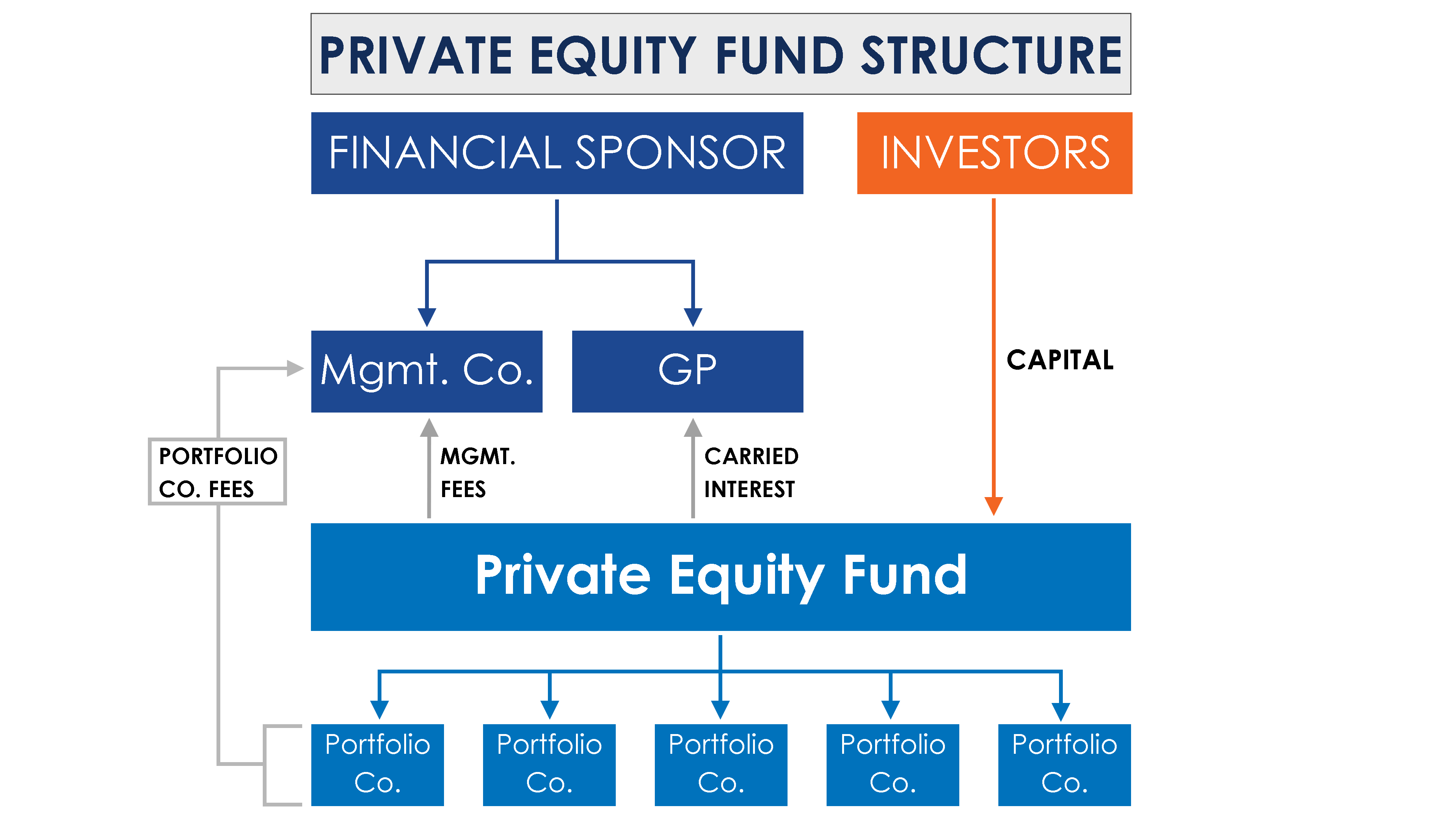Private Equity Fund Structure
Chapters
Summary Text
Private equity funds are closed-end investment vehicles, which means that there is a limited window to raise funds and once this window has expired no further funds can be raised. These funds are generally formed as either a Limited Partnership (“LP”) or Limited Liability Company (“LLC”). The advantages of these structures for a private equity fund are as follows:
- Perhaps the biggest advantage for investors is that they are exposed to limited liability. If anything goes wrong in the investment process (bankruptcy, lawsuits, etc.), the investor risks only the capital they have committed.
- LPs and LLCs are pass-through entities for federal income tax purposes.
(Please see the PDF Notes available for download for more information on pass-through entities.)
The Private Equity Fund:
Before any investments have been made, a private equity fund is simply a pool of capital. The amount of capital committed to the fund but not yet allocated is frequently referred to in the industry as “dry powder.” The team of investment professionals that will allocate this capital, and the investors contributing the capital come together via a partnership agreement.
Per the partnership agreement, an investor secures an interest in the fund by contributing capital. Here it is important to distinguish between the amount of capital committed by an investor and the timing of the overall capital contribution. It would be unusual for all of the capital to be funded at once. It is more likely that an investor will fund the commitment in response to several “capital calls.” A private equity firm will issue a capital call when an investment opportunity has been identified and to pay related fees and expenses. In most private equity funds the investor’s role is otherwise entirely passive. It is the responsibility of the financial sponsor to source, acquire, manage and divest the fund’s investments.
The organization chart and definitions that follow will provide additional detail on this structure.
Illustrated Organizational Chart:

Raising a private equity fund requires two groups of people:
Financial Sponsor: The team of individuals that will identify, execute and manage investments in privately held operating businesses. This is generally comprised of a General Partner and a Management Company.
General Partner: The entity with the legal authority to make decisions for the fund. This entity also assumes all legal liability.
Management Company: The operating entity that employs the investment professionals responsible for allocating capital and managing investments. This might also be referred to as the Investment Advisor or simply the Advisor.
Investors: The individuals that will provide the capital to make those investments. Because funds are generally formed as Limited Partnerships, investors are often referred to as limited partners.
In raising a fund, the fund founders will reach out to sources of institutional capital such as pension plans and university endowments, as well as high net worth family offices and individuals. The commitment to the fund, known as the “capital commitment,” will be made via a partnership agreement stipulating that the capital invested or resulting assets will be returned within a fixed period of time (typically 10 years). In most cases this is structured as a limited partnership agreement (LPA).
(Please see the PDF Notes available for download for more information on the limited partnership agreement.)
Introduction to Private Equity Fund Economics:
Management Fees: This defines the fee tied to the capital raised, or assets under management (“AUM”). The Management Company will typically earn an annual 2% fee on AUM.
Performance Fee: For any individual transaction, a distribution waterfall defines the economic relationship between the general partner (“GP”) and limited partners (“LP”). This is how the GP earns what is known as a carried interest, which is typically 20% of the proceeds after the LP has received distributions equal to the original capital invested plus a defined preferred return. Please follow this link for an example.
For a fund, a loss on a particular transaction needs to be taken into account when calculating the performance fee for the fund as a whole. The management fees and performance fee will be explored in greater detail under Private Equity Fund Economics.
POSTED BYASM+ TeamTags:Private Equity, Fund

